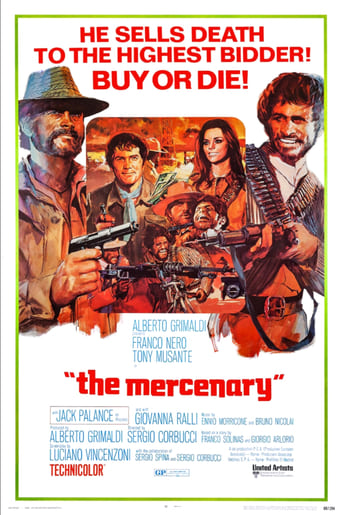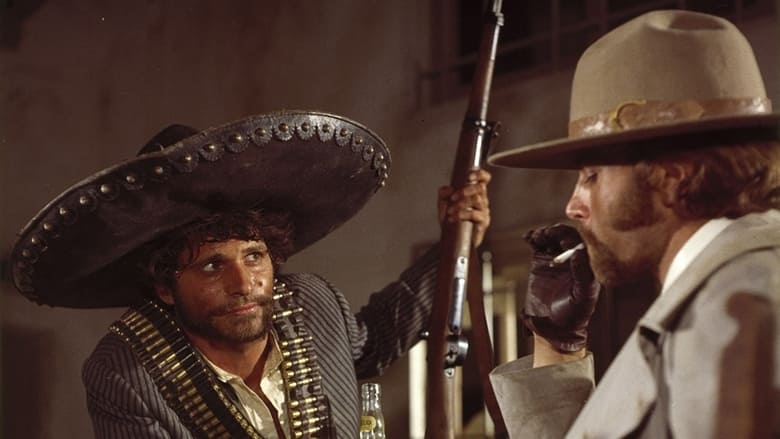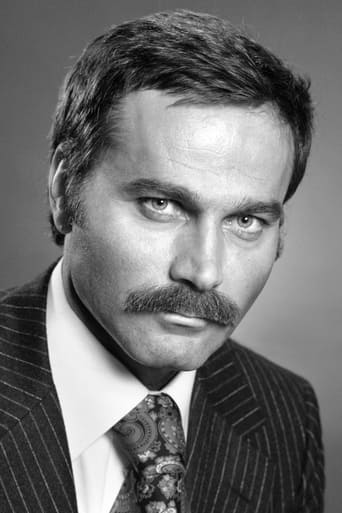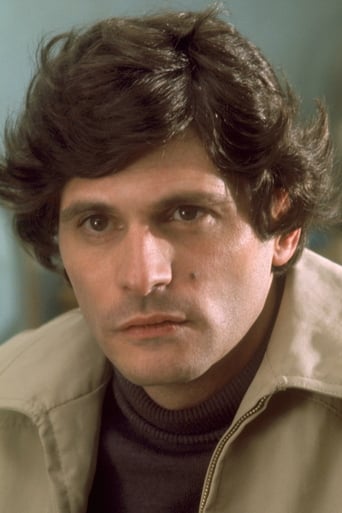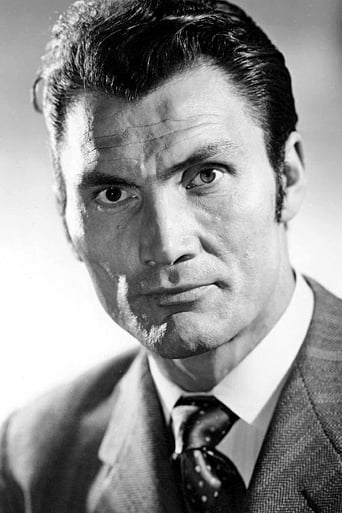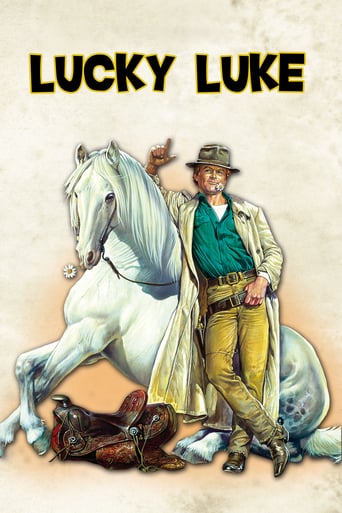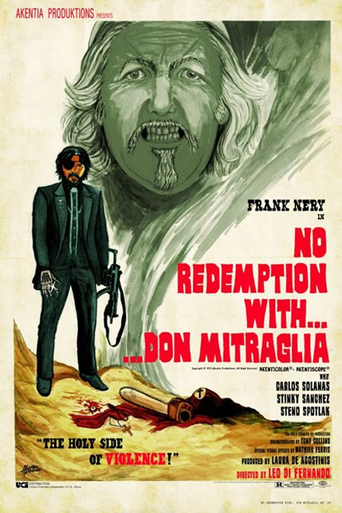The Mercenary (1968)
While a Mexican revolutionary lies low as a U.S. rodeo clown, the cynical Polish mercenary who tutored the idealistic peasant tells how he and a dedicated female radical fought for the soul of the guerrilla general Paco, as Mexicans threw off repressive government and all-powerful landowners in the 1910s. Tracked by the vengeful Curly, Paco liberates villages, but is tempted by social banditry's treasures, which Kowalski revels in.
Watch Trailer
Cast
Similar titles
Reviews
Good story, Not enough for a whole film
It is not deep, but it is fun to watch. It does have a bit more of an edge to it than other similar films.
The story-telling is good with flashbacks.The film is both funny and heartbreaking. You smile in a scene and get a soulcrushing revelation in the next.
The thing I enjoyed most about the film is the fact that it doesn't shy away from being a super-sized-cliche;
Il mercenario (The Mercenary) is directed by Sergio Corbucci and Corbucci co-writes the screenplay with Luciano Vincenzoni, Sergio Spina and Adriano Bolzoni. It stars Franco Nero, Tony Musante, Jacl Palance and Giovanna Ralli. Music is by Ennio Morricone and Bruno Nicolai, with cinematography by Alejandro Ulloa.It's the Mexican Revolution and Sergei "Polack" Kowalski (Nero) is a gun for hire. Hired by revolutionary Paco Roman (Musante), Kowalski muses on all the scrapes they got into before bringing the story to a present day resolution...A Technicolor/Techniscope production, Corbucci's Zapata Western is a barnstormer full of political bents, wry humour and searing action. With beautiful Spanish vistas prominent and a musical score that's like a spicy jumping bean, story holds court from beginning to end. Essentially at it's heart it's a buddy buddy piece, though these buddies are hardly what you would call rock solid. Into the mix comes the gorgeous Ralli to add the sauce, whilst as Paco and Kowalski take on the Government and its Army, they also have to contend with Curly (Palance), a camp sadistic dandy with revenge on his mind.Corbucci has a great eye for action, there's reams of gun fire, with machine guns, artillery and even a plane laying waste to bone and buildings, and usually the cruelty and carnage on show is done with a glint in the eye (milk and dice drink/grenade in mouth), and splendidly so. It's so deft that often a scene is being played out and on the side there is an execution going on, casually unfurled as matter of fact. There's also religious fervour cheekily in place, with Paco's army the Apostles and Polack their Jesus, so it's no surprise that religious imagery is placed within.Corbucci also likes to let his camera talk. Standard Pasta Western traits operate, such as close ups of the eyes, roving tracking shots, angled up tilts and glides. He also gets lucky with the weather for one shot, capturing a natural rainbow amid some more furious character action. Cast are doing sterling work. Nero is cool supreme, with awesome face fuzz and casually striking matches on various things, Nero proves to be a fine action hero and it's so easy to buy into his character. Musante is also excellent, giving Paco an earnestness that's beguiling, he's a lovable rogue, at times bumbling but utterly heroic within the revolutionary arc. While Palance, though not in it as much as you would think, is giving Curly a most intriguing persona, confusing sexuality and religious alibi.From a bullring circus opening featuring midget clowns, to a glorious clifftop turkey shoot finale, there is nary a dull moment in the pic. Top dollar Pasta Oater. 8.5/10
Also known as "The Professional Gun", this one is full of color and movement, directed with vigor and imagination. It's a marvelous return to form for director Sergio Corbucci who had recently let his admirers down rather badly with a weak Cameron Mitchell vehicle. In this film, Franco Nero is perfect in the title role – an offbeat piece of casting that works with astonishing success. Corbucci looks set to take over in Italian westerns where Clint Eastwood left off. Franco Nero is often costumed in somewhat similar apparel and Corbucci has copied Leone's use of facial and eye close-ups. Ennio Morricone's foot-tapping music score with its invigorating use of whip cracks is another plus. The rugged landscapes and Spanish-Mexican architecture are dazzlingly captured by Ulloa's color camera.
Very fine spaghetti western with much variety. There are sweeping landscapes and massed shoot outs but also more intimate wrangles, moments of humour and tight hand to hand fighting. Big and somewhat sprawling though the plot may be there is always time given to sly asides and intimate exchanges. There are times to cheer and times to smile as this well made movie unfolds with much style. Central performances of Franco Nero, Jack Palance and Tony Musante are all first rate and all help to fully engage the viewer. And, having said all that, even if all the above had been less than it is, then surely the Morricone score would carry it anyway. As with the rest of the film, this is a very varied score, soaring one minute, clattering at another and then spine tinglingly effective at others. Very watchable.
In the late 1960s the Spaghetti Western boom entered a new phase, in which the Zapata Western became very popular. The Mercenary was key spaghetti director Sergio Corbucci's main contribution to the sub-genre.Now that he was working with Alberto Grimaldi – producer of Sergio Leone's westerns – Corbucci was at last able to create a western with really lavish production values. The Mercenary features impressive sets, hundreds of extras and of course, being a Corbucci picture, plenty of huge explosions. He is also reunited with his Django lead man, Franco Nero (here speaking for himself rather than being dubbed, which is very welcome), as well as having prominent Italian actor Tony Musante and Hollywood veteran Jack Palance on board for his most high-class line up yet.Another plus point for The Mercenary is that it does not suffer from the messy plotting of Corbucci's previous westerns, having instead a very tight storyline from Franco Solinas with screenplay by another Leone collaborator, Luciano Vincenzoni. Like Bullet for the General and Big Gundown before, it's another political western in which the hero has to make a choice between material gain and revolutionary commitment. It's an example of this bizarre, almost puritan form of Marxism that seems to be in all Solinas' stories, and it does grate a bit. However the story is well constructed, and the dialogue isn't too bad when compared to Corbucci's previous efforts and the majority of spaghettis made at this time. Crucially there is greater subtlety and tautness, a good example being in the first scene at the mine where we cut from Tony Musante realising the gang boss's pistol is within reach straight to the scene in which he and his comrades are holding up the mine owners.On more solid ground as far as production and script go, Corbucci appears to have taken the time to work out ideas and plan shots. There is some great camera work here and again there is some nice subtlety in the way in which things are revealed to the audience. For example, in an early scene the camera focuses on Jack Palance's nonchalant mannerisms while his henchman is killing a man off screen. The old Corbucci would have shown the killing itself in full gory detail.There had also been a growing use of symbolism in Corbucci's pictures and by this point he was become almost arty. There's a very clever moment at Paco and Columba's informal wedding, in which Giovanna Ralli is shown behind a net curtain. When she and Musante kiss the camera moves so that she is no longer obscured by the net, referencing the lifting of the veil at a traditional wedding.One of the reasons Corbucci really stands out as a spaghetti western director is that he has his own very distinct style, rather than simply copying the master Sergio Leone. The Mercenary does however contain one very obvious Leone rip off – a drawn out, tense final duel, complete with a circular arena set and rhythmic editing between close-ups. But it's forgivable, since he does it so well – it is in fact one of the best sequences he ever filmed – and there's a great twist to it which I won't reveal. The Morricone piece which accompanies this stand off – a triumphant Mexican march which would later be plundered by Quentin Tarantino for Kill Bill – is also comparable to that composer's work with Leone.When you get down to it though, Corbucci is still really just a simplistic action director who likes explosions, last-minute escapes and indestructible heroes. Often the over-the-top abilities of the protagonists don't sit well with the more earnest moments, and it's actually profoundly un-Marxist to pretend that revolutionaries are some kind of invincible supermen. Some poor attempts at comedy don't quite get off the ground, and good actor as he is, Franco Nero is frankly (no pun intended) annoying as the obnoxious title character.Corbucci, Nero and Palance were to tread the same territory again in Companeros (1970), which is so similar as to be virtually a remake. The Mercenary however is fresher and stronger, by far the better of the two. While this was probably Corbucci's most finely crafted film to date, his next – The Great Silence – was to be his masterpiece.
